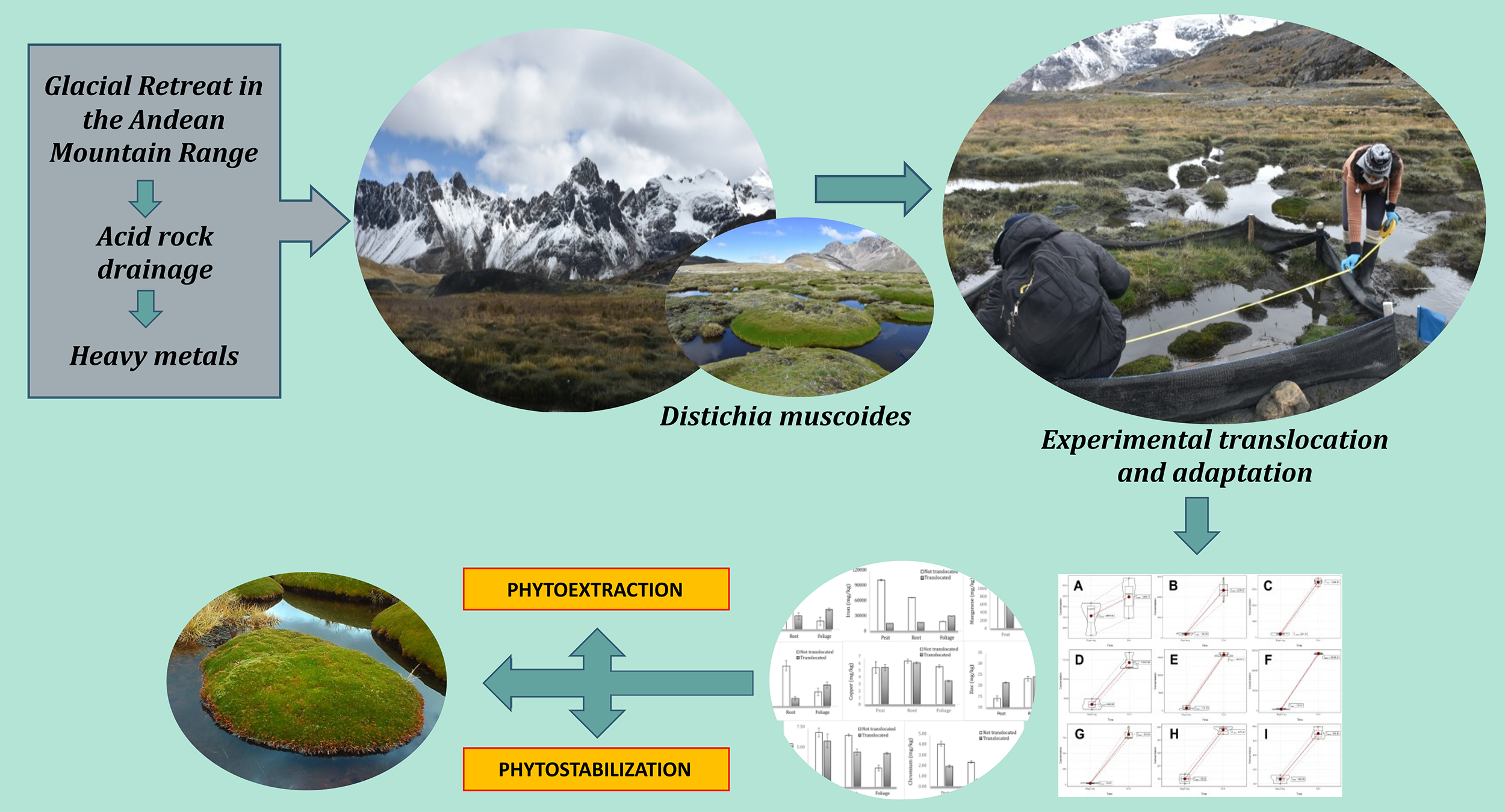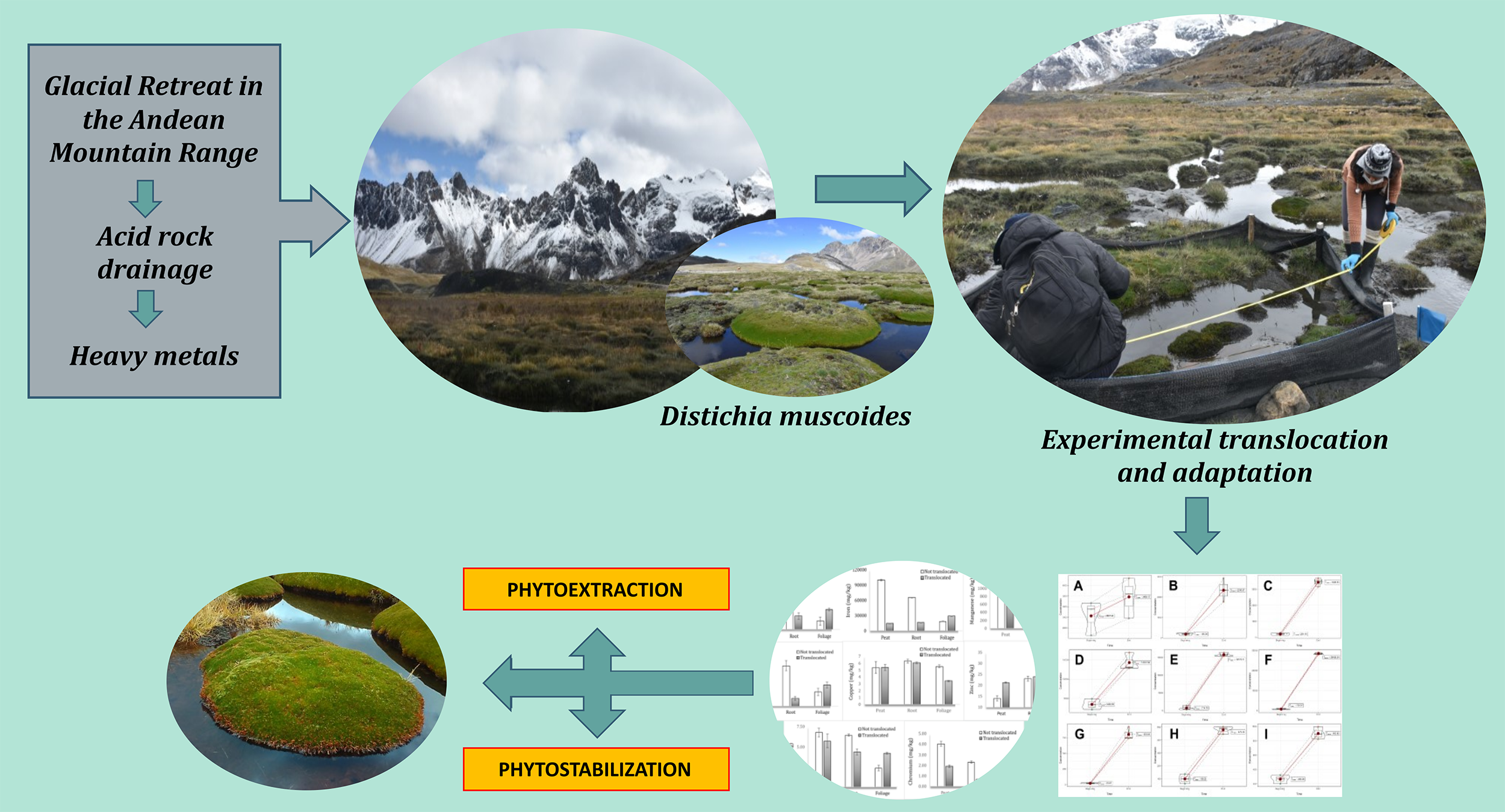Translocation and experimental adaptation of Distichia muscoides cushions in a wetland impacted by acid rock drainage, Ancash, Peru
Keywords:
Distichia muscoides, remediation, wetlands, translocation, heavy metalsAbstract

The deglaciation of the Andean mountain range negatively impacts ecosystems and water bodies, primarily increasing the concentration of heavy metals. However, their concentration can be reduced by applying bioremediation techniques. The objective of this study was to evaluate the effect of the translocation and adaptation of Distichia muscoides cushions in a wetland impacted by acid rock drainage in a high Andean region. For this purpose, the characteristics of water, peat, and D. muscoides tissue were compared in two wetlands, and the behavior of translocated D. muscoides was evaluated based on the bioaccumulation and translocation factors of metals. The quantification of Al, Fe, and Mn in peat, root, and aerial tissue of D. muscoides showed higher concentration values after the translocation of the cushions. Additionally, the bioaccumulation factor classified the transplanted cushions as accumulators of Al, Cu, As, Fe, Mn, and Zn, while the translocation factor classified the cushions as phytoextractors of Al, As, Cr, Fe, Mn, and Zn, and phytostabilizers of Pb and Cu. It is concluded that translocated and adapted D. muscoides cushions have potential for the bioremediation of wetlands contaminated with acid rock drainage.
Hightlights:
- Two wetlands in the Andean mountains were characterized, one with apparent DAR impact and one without.
- muscoides was successfully translocated and adapted to a DAR-impacted wetland.
- The concentrations of heavy metals such as Al, Fe, and Mn increased after translocation in the peat, aerial tissues, and roots of muscoides.
- muscoides demonstrated its potential as a phytoextractor and phytostabilizer of heavy metals.
- The translocated cushions of muscoides show promise for the bioremediation of heavy metals.

Downloads
Published
Issue
Section
License
Copyright (c) 2018 Revista de la Facultad de Ciencias Agrarias UNCuyo

This work is licensed under a Creative Commons Attribution-NonCommercial-ShareAlike 3.0 Unported License.
Aquellos autores/as que tengan publicaciones con esta revista, aceptan las Políticas Editoriales.


